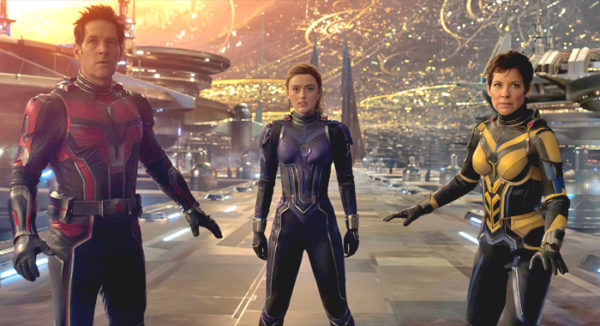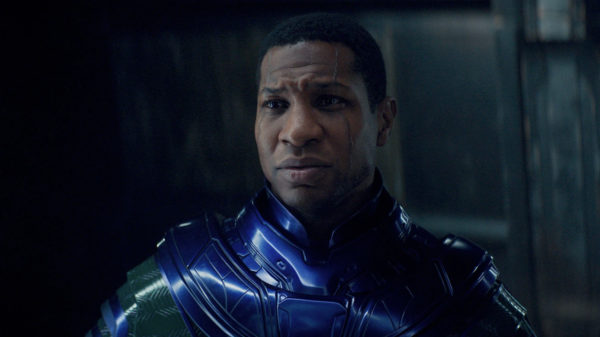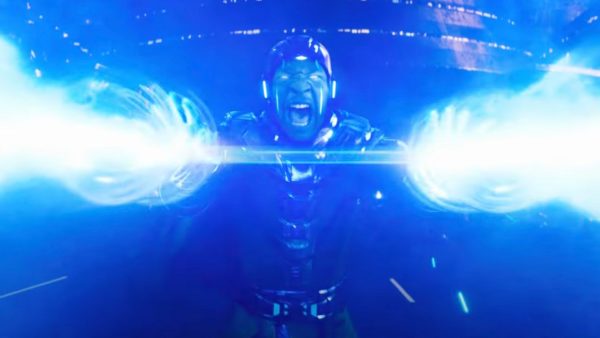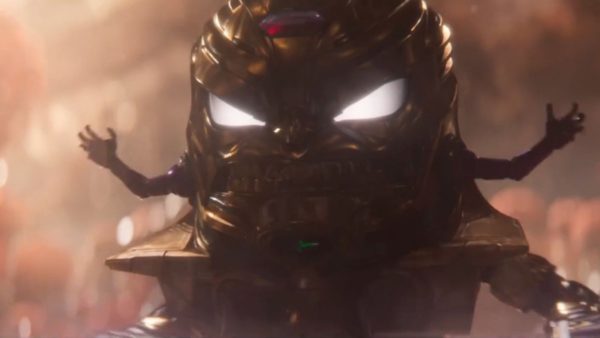
The MCU enters Phase 5 with Peyton Reed‘s trilogy-capper Ant-Man and the Wasp: Quantumania, which (re)introduces the main villain/ongoing threat for the next batch of films.
One of the challenges that Marvel has set for itself by interlocking all of its films is that they are simultaneously separate from and dependent on each other. That’s particularly challenging for the third Ant-Man, which bears the responsibility of setting up the conflict for the next Phase, while still attempting to tell a compelling standalone narrative for these characters.
It’s not a new problem for an MCU film, but Quantaumania is especially shaky at balancing its competing narrative interests.
Screenwriter Jeff Loveness opens and closes the film with an amusing framing device wherein Scott Lang (Paul Rudd, charming as ever) walks down the street, catching the audience up on his life via voice-over. As the film opens, Lang is adjusting back to a low-key life: he has written a bestselling memoir, girlfriend Hope (Evangeline Lily, sporting a fresh short ‘do) has taken over Pym Industries and her parents Hank (Michael Douglas) and Janet (Michelle Pfeiffer) are getting reacquainted after Janet’s 30 year stint in the Quantum Realm.
It’s a solid, expeditious re-entry before Scott and Hope pick up Scott’s daughter, Cassie (now played by Freaky‘s Kathryn Newton) from jail. Cassie is a burgeoning scientist in her own right, as well as an activist who wants to make a difference in the world. She feels that her father is coasting following the events of Endgame and there’s a disconnect in their relationship because he won’t acknowledge how much she grew up during his 5 year absence during the Blip.
The plot kicks into gear when Cassie reveals she’s built a device that sends a signal to the Quantum Realm and everyone is sucked into a vortex. The group is immediately separated into their respective families for separate adventures: the Langs encounter a rebel group of marauders, while the Pyms contend with the dark foe that Janet has a mysterious relationship with.

That would be Kang, the MCU’s new Big Bad, played by the incomparable Jonathan Majors. The break-out star of Lovecraft Country and countless other recent productions is, as expected, excellent in the role. Marvel has a difficult history of creating memorable villains for their superhero films, and while Kang isn’t on par with Thanos or Killmonger, he has plenty of potential. Majors’ soft spoken eloquence is quietly menacing, he has a commanding presence and the character has seemingly limitless powers (Sidebar: while we barely get any skin, the brief glimpse of bicep is clearly still Magazine Dreams-level toned).
The issue is that Kang is quite obviously being groomed as the next major MCU villain (a la Thanos) and Quantumania exists principally to (re)introduce him. A variant of the character first appeared as the Big Bad in Disney’s Loki TV series (TVLine has a helpful reminder article if you’ve forgotten how that all went down), but suffice it to say that Quantumania doesn’t do much to expand upon the character’s already established desire to clean up the multiverse of different timelines and, in the process, kill billions. Thanks to the film’s self-imposed hurdles, though, the immediate threat posed by Kang is this film is quite small: he must be kept incapacitated. That means that the whole film is a big case of “hurry up and stop”, where the true conflict is being held back for future films, not this one.

The rest of the film is fine. There’s some fairly broad humour, particularly M.O.D.O.K, a returning character in a new form that Loveness thinks is hilarious and will undoubtedly divide moviegoers. There’s the expected family storyline wherein Scott learns to let Cassie become her own person, though Cassie is far too shallow a character to make much an impression (despite Newton’s charm and clear enthusiasm).
Most frustratingly, after a nothing role in Ant-Man and the Wasp, Pfeiffer finally gets a juicy role in Quantumania. Alas it amounts to keeping Janet tight-lipped about her time in the Quantum Realm for the first half of the film, much to the chagrin of both her family and the audience. It’s Loveness’ attempt to build suspense and delay Kang’s reveal, but the reality is that Janet’s refusal to fill her family in is a frustrating narrative ploy that makes Janet look foolish for endangering her family. Characters repeatedly refusing to divulge important information is a lazy plot device and it saps the enjoyment of the film’s early portions.

This is frustrating because the visual look of the Quantum Realm is pretty fun, particularly the introductory world-building. The FX looks good and has, yes, a Star Wars feel in its setting and alien creature design (one almost expects to hear the familiar Cantina music from A New Hope when the Pyms swing by a bar).
Sadly the action is the film’s other letdown, as only the second act hallucinatory set piece wherein Scott multiplies into a million Ant-Mans, really stands out. After two films (and several guest appearances in other Marvel titles), the shrinking/embiggening effects are pretty familiar at this point. Even Kang’s abilities feel reminiscent of Thanos, albeit with a touch of Darth Vader telekinesis.
Overall, Ant-Man and the Wasp: Quantumania is fine. It’s a solid mid-tier MCU entry (like the other two Ant-Man films). It’s amusing and often visually compelling, particularly early on before Marvel’s traditional dark grey FX-heavy finale.
One simply wishes that the film didn’t exist principally to set-up the villain/conflict for the rest of the Phase. Did we really need a two hour and five minute film just to introduce Kang?
Because at its core, that’s what Quantumania is. 3/5
Ant-Man and the Wasp: Quantumania is now in theaters